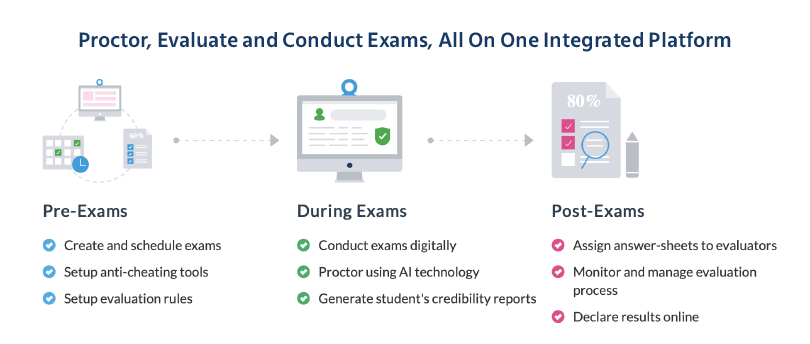From the core to the interface, unravel the mystery of frontend, backend, and admin roles with our ultimate guide!
Welcome, fellow tech recruiters! In this fast-paced tech industry, finding the perfect candidates for frontend, backend, and admin roles can seem like a daunting task. However, fear not, for we have curated the ultimate guide to help you understand and identify the most suitable candidates for these common tech roles. So let's dive in and demystify the world of frontend, backend, and admin positions!
Frontend development refers to the design and development of the user interface (UI) of a website or application. It involves creating everything that users see and interact with. Understanding the frontend role is crucial as it sets the first impression and overall user experience. So, let's explore the key components and responsibilities of frontend developers.
Unlock the Secrets of Tech Recruitment: Simplifying Frontend, Backend, and Admin Roles!
Stay informed and ahead of the game - Subscribe to our newsletter now!
Frontend developers primarily work with three core technologies: HTML, CSS, and JavaScript.
HTML (Hypertext Markup Language) is the standard language used to structure the content of web pages. It defines the elements and layout of the web page, such as headings, paragraphs, images, and links.
CSS (Cascading Style Sheets) is responsible for the visual appearance of the website. It allows developers to control the colors, fonts, spacing, and overall layout of web elements.
JavaScript is a programming language that enables dynamic behavior on web pages. It adds interactivity, animations, and enhances the user experience.
Frontend developers collaborate with UI/UX designers to implement visual designs, ensure responsive layouts, and optimize user interactions. They work with frameworks, libraries, and tools such as React, Angular, and Vue.js to build complex and interactive web interfaces.
When searching for frontend candidates, focus on evaluating their proficiency in HTML, CSS, and JavaScript. Explore their portfolio to see examples of their previous work and pay attention to the user experience they have created.
While frontend development focuses on the user interface, backend development lies behind the scenes. It comprises the server-side of applications, dealing with data storage, processing, and business logic. Understanding the core technologies and responsibilities of backend developers will help you identify the right candidates for this role.
Backend development typically involves working with programming languages such as Java, Python, PHP, and Ruby. These languages provide the foundation for building powerful, scalable, and secure web applications.
Backend developers also use frameworks and libraries like Spring Boot (Java), Django (Python), Laravel (PHP), and Ruby on Rails (Ruby) to streamline development and enhance productivity. They interact with databases, such as MySQL, PostgreSQL, or MongoDB, to store and retrieve data efficiently.
In addition to writing server-side code, backend developers are responsible for implementing APIs (Application Programming Interfaces), managing authentication and security measures, optimizing performance, and ensuring smooth integration between frontend and backend components.
When evaluating backend candidates, focus on their experience with the relevant programming languages, frameworks, and databases. Look for their ability to design and develop scalable architecture, apply security best practices, and optimize performance.
"Unlock the secrets of the tech industry with this comprehensive guide to frontend, backend, and admin roles! 🌐💡 Prepare to embrace the possibilities and level up your digital expertise. [insert link] #TechGuide #CareerDevelopment #DigitalSkills"Tweet Quote
System administration plays a vital role in maintaining the infrastructure that supports software applications and services within an organization. While this role may not involve direct development, understanding the key responsibilities and technologies involved is essential for effective recruitment.

Image courtesy of via Google Images
System administrators are experts in managing servers, networks, and security principles. They work with technologies like Linux, networking protocols, cybersecurity tools, and cloud platforms.
Linux, an open-source operating system, is widely used in server environments. System administrators need to possess strong command-line skills and knowledge of Linux-based tools for managing servers effectively.
Networking plays a crucial role in system administration. Understanding network protocols and concepts, such as TCP/IP, DHCP, DNS, and firewalls, is necessary for configuring and troubleshooting network connectivity.
Cybersecurity is another crucial aspect of system administration. System administrators need to implement security measures, such as user access control, data encryption, and vulnerability management, to protect the organization's infrastructure from potential threats.
Cloud platforms, like Amazon Web Services (AWS) and Microsoft Azure, have gained immense popularity in recent years. System administrators should have experience working with these platforms, provisioning servers, managing resources, and ensuring high availability.
When evaluating system administration candidates, focus on their knowledge and experience with Linux, networking, security principles, and any relevant cloud platforms. Look for candidates who possess strong problem-solving skills, attention to detail, and the ability to handle critical situations effectively.
Unlock the Secrets of Tech Recruitment: Simplifying Frontend, Backend, and Admin Roles!
Stay informed and ahead of the game - Subscribe to our newsletter now!
Recruiting the perfect candidates for frontend, backend, and admin roles can be made easier by understanding the core responsibilities and technologies associated with each role. By familiarizing yourself with the intricacies of these tech roles, you will be better equipped to assess candidates' skills, evaluate their experience, and find the best fit for your organization.
Remember, continuous learning and adaptation are crucial in the ever-evolving tech industry. Stay updated with emerging technologies, industry trends, and the evolving needs of your organization to ensure long-term success in recruiting tech talent.
We hope this curated guide has shed light on the frontend, backend, and admin roles, making your recruitment process smoother and more successful. Happy recruiting, tech superheroes!